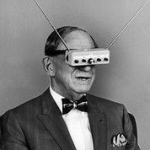What exactly is innovation? One thing it is not is “a good idea”. There are plenty of good ideas in the world but that is not enough to build a project, let alone a start-up. And yet it happens. Time, money and resources are invested in “good ideas” that do not have legs and so they fail. Let’s start by offering a definition of innovation: an innovation is something that removes an existing limitation.
Feeding the solution
Today a beautiful example of a true, win-win innovation was reported in First Class Meal: Could the Declining US Postal Service Deliver Food to the Needy?
Students from St. Louis have tackled a serious problem:
“Despite living in one of the wealthiest nations in the world, one in seven US residents is “food insecure”. These 48 million people struggle to reliably find food, even as the rest of the population throw out about 60m tonnes of it a year.”
Their brilliant solution called ‘First Class Meal’ has won the Urban SOS: Fair Share. It envisages involving the ailing US Postal delivery service, in decline because of the digital revolution, in the distribution of available food. The existing network, trucks and buildings can all be utilized.
We can safely say that this is not just a good idea because it addresses an existing limitation, in this case the distribution of food that is available but that is not reaching those who need, and also the limitation of relevance that is hitting the postal service as long is tries to be a postal service.
To come up with this solution, its authors had to challenge a series of existing assumptions or ‘mental models’ about the current situation of those not receiving the food as well as the role of the postal service. This is the essence of how true innovation, not just good ideas, can happen.
A procedure for innovation
If innovation removes a limitation, then we have to start from identifying that limitation. In the language of the Theory of Constraints, that means the constraint of the situation, and this is generally connected with the thinking or mindset that predominates. This is what needs to be tackled to move towards breakthrough and true innovation. A cycle of Thinking Process tools exist that start from an initial situation of blockage/constraint and work through the systematic challenging of related assumptions to get to breakthrough. They are a proven method not just for “engineering” the process of innovation but for strengthening the thinking and mindset that true and continuous innovation rest on.
A word on immigration
In spite of progress, the problem of hunger exists in the first world. On moving to New York back in 2006 it was a shock to discover that 1 in 4 New Yorkers had to use a food bank. However, being in New York and America they no doubt had hope that would see better times. Trump’s administration’s actions to limit immigration from certain countries, even for people who have been through the torment and vetting of obtaining a Green Card, is a lose-lose position. Apart from the undoubted skills that foreign workers bring and for which they were admitted, they bring the added benefit of fresh eyes for old problems. I don’t know if the authors of the First Class Meal innovation project, Anu Samarajiva and her classmates Irum Javed and Lanxi Zhang, are Americans or immigrants. But one thing is for sure. Seeing things anew is the source of innovation.
Sign up to our blog here and shift your thinking towards broader, systemic possibilities for yourself and your organization.
About the Author
Angela Montgomery Ph.D. is Partner and Co-founder of Intelligent Management and author of the business novel+ website The Human Constraint . This downloadable novel uses narrative to look at how the Deming approach and the Theory of Constraints can create the organization of the future, based on collaboration, network and social innovation. She is co-author with Dr. Domenico Lepore, founder, and Dr. Giovanni Siepe of ‘Quality, Involvement, Flow: The Systemic Organization’ from CRC Press, New York.






Leave a Reply